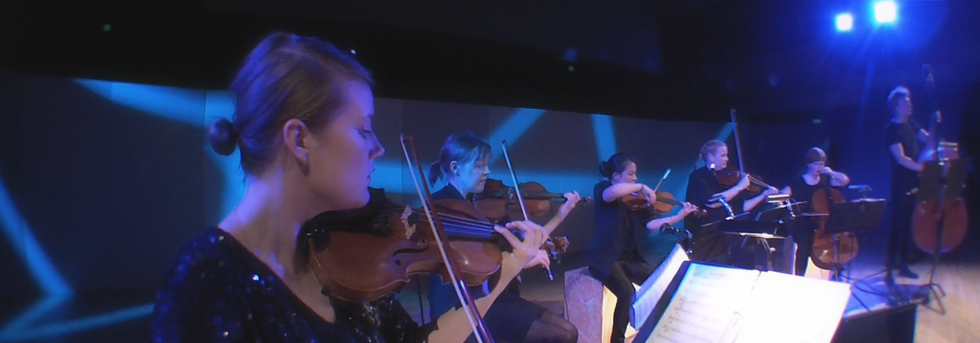How to choose the right kind of instrument microphone. Read about what you should be aware of when choosing your next microphone for your instrument.the right choise of microphone
By Anders Feerup, April 2016
Anders Feerup, sound engineer at JAZZHOUSE, MOTO ApS and AFMedia.
Instrument microphones
Chances are that you are one of the musicians who have spent a vast amount of time finding your exact instrument. One that truly suits you. You might have invested lots of money and time in continually improving at this specific instrument.
You’ve done this in order to tell your story to the audience through music, where even the smallest of details work together to create the right atmosphere.
The sound engineer and the venue/festival have often made an effort to set the stage in the best way possible. The PA and monitor system are optimized to deliver the best possible sound to you on stage and to the audience.
And yeah, now you have to find a suitable microphone capable of amplifying the sound of your instrument – including all those small, invisible details, you’ve practised for thousands of hours.
And it has to be without acoustic feedback or other obstacles along the way.
Choosing the right microphone
Where am I going with this? What I want to tell you, is that it usually does not produce the best result to pick a microphone designed from parameters in an anechoic room. Neither does picking a universal ”one size fits all” microphone, used on basically all instruments, ranging from eletric guitar to brass and drums.
The microphone data might be great and impressive on paper, measured in an anechoic room, etc. But the microphone hasn’t been mounted on a instrument here.
Out in the real world, completely different parameters are relevant.
Out here, it is important to choose a microphone designed for the purpose. It has to be developed and designed for your exact instrument and the environment in which it is to be used. You can get away with changing the tires of your car by utilizing a normal wrench – a universal tool for bolts – but it is definitely not optimal. You would obviously choose a wheel wrench tailored for the bolts on your vehicle.
Way too often, I have experienced microphones with very fine characteristics (designed to resist acoustic feedback, interference and almost even negative reviewers) behave very differently in the real world.
This means that you have to spend a lot of time accomodating and fixing all the flaws the microphones have, when they are mounted and exposed to a live situation with lots of reflections and intereference on stage.

The Danish string ensemble, Who Killed Bambi? using REMIC microphones, as here during rehearsals for one of this year’s concerts at the SPOT festival 2016.
Avoid general purpose microphones
General purpose clip-on microphones are often equipped with a ”gooseneck”, which is what poses the first challenge: ”I had good sound last time, but where was the microphone placed?”. It is practically impossible to mount the microphone in the exact same place with the same distance and angle to the instrument, as it was the last time. To add insult to injury, you will also experience a degree of microphone movement during the concert, so it turns and points in the wrong direction. More often than not, these microphones utilize a cardioid or super cardioid characteristic, making them very sensitve to the microphone-instrument angle. If they are pointed in the wrong direction, they will sound wrong. And in the heat of the battle, you might not notice if it has turned 20-30 degrees, or even down towards the monitor!
On top of this, other problems occur. This is true especially for violinists. The view to the fretboard is impaired, the respiration of the musician is captured by the microphone, etc. This is all completely natural, but not always optimal when heavily amplified. Of course, the musician has the option to hold their breath for the duration of the concert, but this is not normally something I endorse.
In some contexts, I am met with a certain skepticism from musicians, who don’t want an entire entrepreneurial construction mounted on their expensive violin, cello or drums for that matter. The instrument is, to many musicians, a piece of art in and of itself, and the aesthetic element is an important one to preserve. Also during a live concert.
Buy Cello Microphones from REMIC
Save time
The microphones from REMIC MICROPHONES are developed in close collaboration with instrument builders, musicians and sound technicians. They are specifically taiolred to each instrument-group and different acoustic environments. At the same time, they respect and accomodate the aesthetic value of the individual instruments. This all leads to a greater degree of freedom for both musician and technician.
It becomes far easier to deliver the desired result to the audience, and a lot of time is actually saved on sound checks.
REMIC MICROPHONES are instrument-specific microphones, and not general-purpose or multi-purpose microphones. They are highly specialized to the instrument and the environment in which they are to be used.
This means that the REMIC MICROPHONES interact with the instrument and functions as a natural acoustic extension of the individual instrument.
Be aware of the possibilities you have and challenges you face when picking your next microphone. Make sure you get the right microphone for your instrument. Your choice matters. For you, the sound technician and most of all your audience.
EXPRESS YOUR ART
Join us at Facebook
